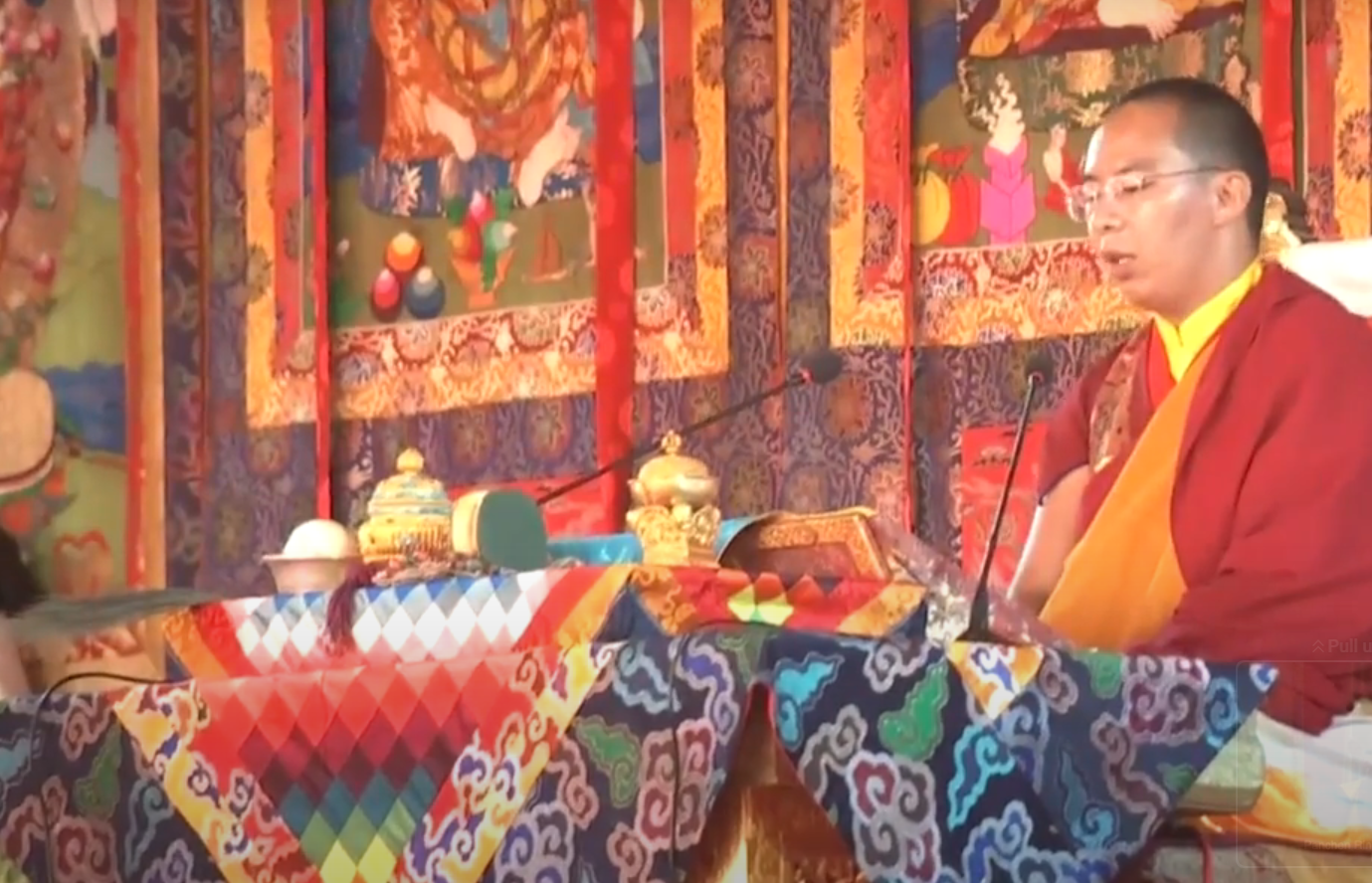
Nepal media note absence of Beijing’s Panchen Lama
Gyaltsen Norbu, was reportedly due to travel to a Chinese-organised Buddhist conference in Nepal
Over the weekend, Nanhai Buddhism Shenzhen Roundtable took place in Nepal. 220 Chinese Buddhist monks arrived on a chartered flight for the Chinese-organised Buddhist events in Kathmandu and Lumbini.
Tibet watchers were paying particular attention to this delegation after reports last week that the Chinese-imposed Panchen Lama, Gyaltsen Norbu, would be among them.
One report in the online newspaper Nepal Aaja, suggested that Gyaltsen Norbu would arrive in Nepal on 14 December. The article noted that the visit of Beijing’s Panchen Lama was “part of China’s effort to extend its influence over Buddhist communities in South Asia”, with the Chinese government appearing to be “leveraging cultural and religious diplomacy to reinforce its soft power.”
Reports from Nepal over the weekend state that Gyaltsen Norbu never made the trip to Nepal. These follow reports last week from Nepal that the government of Nepal itself blocked the trip.
The Kathmandu Post reported that due to the sensitivity of Gyaltsen Norbu’s visit, the Government of Nepal told the Chinese embassy that he would not be welcome, citing Nepal’s “neutrality on religious matters”. The Chinese embassy has since denied that it was ever the intention for Gyaltsen Norbu to travel to Nepal.
Security sources quoted in Nepalese media even raised the possibility that Gyaltsen Norbu may attempt to enter Nepal with an assumed identity or in disguise, risking a geopolitical crisis. Rigorous checks were therefore carried out on each passenger.

The Monastery of World Peace, Lumbini, credit Kushal Kafle
Nepal is located between Chinese-occupied Tibet and India, with Lumbini located close to the Indian border. Lumbini is also significant as the birthplace of Siddhartha Gautama, the Buddha.
The Kathmandu Post article last Thursday quoted Lyarkal Lama, vice-chairman of the Lumbini Development Trust, who said that the Panchen Lama “has been trying to visit Nepal for the past ten years […] He is such a powerful person, he can come here only with the permission of our prime minister.”
Born in 1990 and raised in Beijing, Gyaltsen Norbu has been promoted as the 11th Panchen Lama by the Chinese government since 1995, when he was enthroned at Tashilhunpo Monastery in Shigatse.
At 16, he addressed the 2006 World Buddhist Forum in 2006, which was the first major international religious conference in the People’s Republic of China since its founding in 1949. Ten years later, he returned to Shigatse, the historic seat of the Panchen Lama, to carry out the Kalachakra, a major religious teaching. It was the first time in half a century that the Kalachakra initiation had been held in occupied Tibet.
While Beijing has attempted to promote Gyaltsen Norbu, he remains widely rejected among Tibetans, who instead continue to demand information about Gedhun Choekyi Nyima.
Gedhun Choekyi Nyima was identified by the 14th Dalai Lama as the Panchen Lama in 1995 but was detained by Chinese authorities days later and has not been seen since. He had only recently turned six years old, making him the world’s youngest political prisoner.

Gedhun Choekyi Nyima, the 11th Panchen Lama, missing since 1995
The enforced disappearance of the Panchen Lama and Beijing’s appointment of its own Panchen Lama are part of a broader strategy by the Chinese government to exert control over Tibetan Buddhism, which is central to Tibet’s identity and closely intertwined with the struggle against its occupation.
Monks and nuns have been at the forefront of protests against the occupation and human rights abuses, notably in the 2008 Tibetan uprising, where one of the key catalysts was a march by 200 monks from Labrang Monastery.
The Chinese government closely regulates Tibetan monasteries, which are required to display loyalty to the Chinese state and the Chinese Communist Party. CCP members have stated on numerous occasions that the Chinese government is the ultimate authority on aspects of Tibetan Buddhism such as reincarnation and the identification and certification of Tibetan lamas and religious teachers. This includes the Panchen Lama and also the lineage of the Dalai Lama.
Chinese officials have stated clearly that Beijing’s control over the reincarnation of the Dalai Lama is strategic. In 2015 Zhu Weiqun, then the Chairman of China’s Committee for Ethnic and Religious Affairs, wrote in the state-run Global Times that the succession “is first and foremost an important political matter” adding that “whoever has the name of Dalai Lama will control political power in Tibet.”
“For this reason,” Zhu concluded, “since historical times, the central government has never given up, and will never give up, the right to decide the reincarnation affairs of the Dalai Lama.”
Despite the public rejection, Nepal’s Prime Minister KP Sharma Oli inaugurated the Chinese-organised event on Friday and was recently in China to sign a Belt and Road Initiative Framework Agreement.
The government of Nepal also continues to prevent any visit from the 14th Dalai Lama, a point reiterated by a senior security official in Nepal: “We have not allowed the Dalai Lama to come to Nepal. By the same token, we also can’t allow a similar China-backed religious figure to visit Nepal.”

Gyaltsen Norbu conducting the Kalachakra in Shigatse, Tibet, in 2016
Nepal is likely to continue to come under pressure from its larger neighbours. Rishi Gupta, Assistant Director of the Asia Society Policy Institute, wrote on Friday: “While the government of Nepal may have refused entry to the Panchen Lama this time […] this decision is far from a permanent safeguard.” He concluded that the “risk of Nepal becoming a staging ground for Beijing’s Sinicisation efforts remains alarmingly real.”
Following the reports that Gyaltsen Norbu was visiting Nepal, Free Tibet joined its partners in the Tibet movement in drafting a letter to Prime Minister KP Sharma Oli, urging him to disinvite him. The letter was also submitted by Tibetans to Nepalese embassies around the world, including the UK embassy in London. The letter can be read here.

